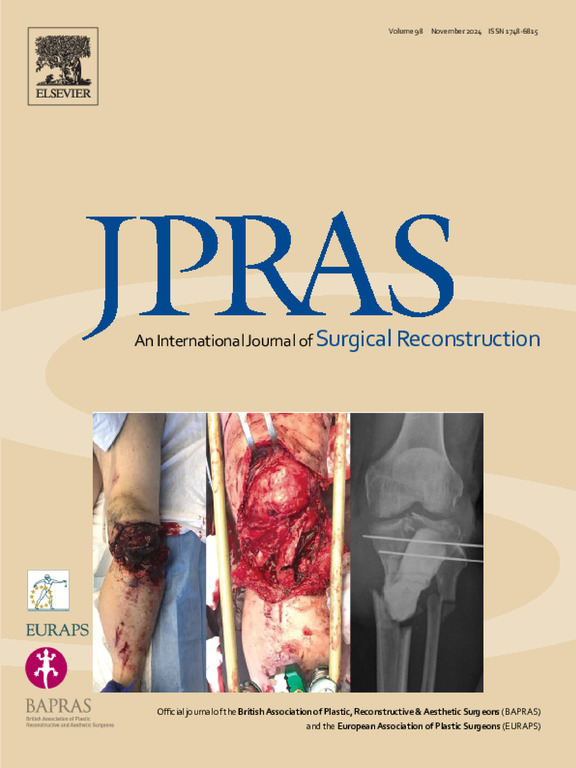Advancing digital anthropometry in plastic surgery: Comparing smartphone 3D surface imaging to Vectra H2 in breast reconstruction
IF 2
3区 医学
Q2 SURGERY
Journal of Plastic Reconstructive and Aesthetic Surgery
Pub Date : 2025-03-22
DOI:10.1016/j.bjps.2025.03.039
引用次数: 0
Abstract
Background
Digital anthropometry is a useful tool for surgeons and patients in breast reconstruction surgery (BRS). Owing to advancements in smartphone technology, these devices can be used for three-dimensional (3D) surface imaging. In this prospective study, anthropometric measurements of the breast were performed using a smartphone and compared with measurements obtained using an established 3D surface imaging system.
Methods
In this study, 40 patients who underwent BRS were included. 3D-surface models (SMs) were obtained using the Vectra H2 stereophotogrammetry camera (Canfield Scientific, USA) and an iPhone 15 (Apple Inc., USA) in combination with the 3D Scanner App (Laan Consulting Corp., USA). Fourteen measurements were performed on all 3D SMs. Subsequently, smartphone-based measurements were compared to Vectra-based measurements. Statistical methods used were the paired t-test, paired Wilcoxon-signed ranks test, Bland–Altman analyses, and calculation of the intraclass correlation coefficient (ICC).
Results
All measurements demonstrated excellent agreement between those obtained using the smartphone and Vectra H2 (ICC between.963 and.998). No statistical differences were found for 11 of the 14 anthropometric measurements. The Bland–Altman analyses yielded promising results, demonstrating 95% limits of agreement within a range of less than ±2 mm between the 2 methods.
Conclusion
The proposed method for smartphone-based anthropometry of the breast showed moderate accuracy for clinical use. However, the approach used to create and evaluate the 3D SMs is considered laborious. Therefore, further refinement of the method may be necessary to enable the implementation of smartphone-based surface imaging in plastic surgery.
Clinical trial registration number
DRKS00034221.
求助全文
约1分钟内获得全文
求助全文
来源期刊
CiteScore
3.10
自引率
11.10%
发文量
578
审稿时长
3.5 months
期刊介绍:
JPRAS An International Journal of Surgical Reconstruction is one of the world''s leading international journals, covering all the reconstructive and aesthetic aspects of plastic surgery.
The journal presents the latest surgical procedures with audit and outcome studies of new and established techniques in plastic surgery including: cleft lip and palate and other heads and neck surgery, hand surgery, lower limb trauma, burns, skin cancer, breast surgery and aesthetic surgery.

 求助内容:
求助内容: 应助结果提醒方式:
应助结果提醒方式:


